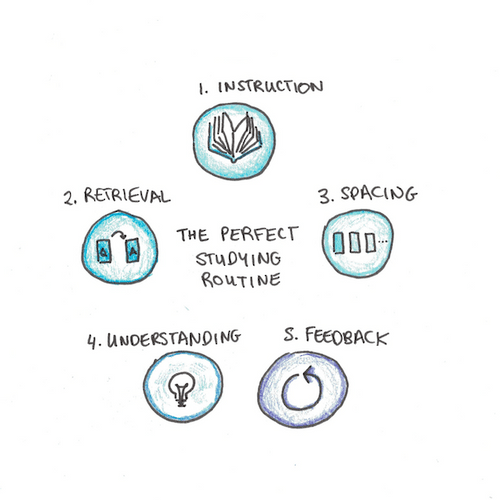The Perfect Studying Routine | Scott H Young
Curated from: scotthyoung.com
Ideas, facts & insights covering these topics:
7 ideas
·1.85K reads
Explore the World's Best Ideas
Join today and uncover 100+ curated journeys from 50+ topics. Unlock access to our mobile app with extensive features.
Previously, I explained the difference between learning bounded and unbounded subjects . School is bounded. Life is unbounded. The difference is critical.
In today’s lesson, I’d like to shift from search strategies to routines. What’s the best routine for studying?
The correct answer is that the perfect routine is one you can stick to and will let you reach your goals. Everyone has different personalities, constraints and preferences—so the perfect routine will be different.
That’s true, but it’s also unhelpful. Obviously some routines are better than others, even if we’re all unique.
374
318 reads
Instead of specifying an exact routine—let’s look at the ingredients any such routine would have. Get the essential recipe right and the spices are up to you.
There are five main ingredients to include in any studying schedule you could dream up:
- Instruction
- Retrieval
- Spacing
- Understanding
- Feedback
There are few subjects where omitting one of these is safe. Conversely, get all five, and the rest is mostly fine-tuning. Let’s look at each:
393
300 reads
Retrieval means deliberately dredging up knowledge from your mind—not just passively exposing yourself to it.
Countless studies show retrieval practice works better than passive review . If you’re going to use the knowledge in a specific place, practice in that place. Do practice tests, work on real problems and apply it.
Spacing is the idea of repeated reviews, spread out in time . It’s one of the most robust effects in cognitive psychology, benefiting many subjects.
377
248 reads
The mechanism is less clear. Consolidation via deep sleep may play a role. Other theories suggest activating knowledge from different prior contexts makes more robust cues for retrieval (e.g. studying it from both your class and from home, gives two starting points to recall a fact.)
371
242 reads
Regardless of how it works, its effectiveness is certain. A good routine needs to cover old knowledge along with new.
The goal of learning is for things to make sense. If something feels like an arbitrary collection of facts, that’s a sign you aren’t investing in understanding it.
Failures to understand can be fixed. The Feynman Technique remains my most popular studying advice. The method is simple: explain the confusing idea to yourself, as if you were teaching it. When you get stuck, find a textbook or teacher and you can now ask a much more specific question.
376
253 reads
Not all understanding needs formal methods. With understanding as a goal, you change how you learn. The question stops being, “How do I cram all of this into my head?” and becomes, “How do I make all of this obvious?”
Feedback is obviously useful. But there are some common misconceptions.
The first is that feedback has to come from people. This is false. “Did that work?” can often be answered directly from the environment. Human feedback can introduce biases, delays and social difficulties, so it isn’t always ideal.
366
237 reads
Here’s your homework for today:
- Pick something you’ve been trying to learn.
- Go through each of the five ingredients. Which is missing or weak?
- What’s one way you could add it in?
- Go to the comments page and write down your response!
Bookworms almost never miss #1 (instruction), but often miss #2 (retrieval). Practitioners get #3 (spacing) and #5 (feedback) for free, but may miss out on #1. A lot of improvements to your routine can come from simply hitting all five.
That’s it for today’s lesson. On Monday, July 6th, I’m going to be reopening Rapid Learner , my six-week learning course. This course covers all of these ingredients in more depth, along with other strategies for improving how you learn.
376
256 reads
IDEAS CURATED BY
Sara Kaade's ideas are part of this journey:
Learn more about writing with this collection
How to communicate effectively with teachers
How to create a supportive learning environment at home
How to manage your child's school schedule and activities
Related collections
Similar ideas
3 ideas
The Perfect Studying Routine | Scott H Young
scotthyoung.com
5 ideas
Five Scientific Steps to Ace Your Next Exam - Scott H Young
scotthyoung.com
10 ideas
Read & Learn
20x Faster
without
deepstash
with
deepstash
with
deepstash
Personalized microlearning
—
100+ Learning Journeys
—
Access to 200,000+ ideas
—
Access to the mobile app
—
Unlimited idea saving
—
—
Unlimited history
—
—
Unlimited listening to ideas
—
—
Downloading & offline access
—
—
Supercharge your mind with one idea per day
Enter your email and spend 1 minute every day to learn something new.
I agree to receive email updates
